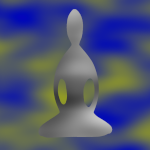Dear Friends,
The next talk on samadhi looks at two movements of concentration practice – to initiate through connecting with an object and to engage with a sustained attention.
https://www.audiodharma.org/talks/11141
The two Pali words for these are vitakka (wi-tah-kah) and vicāra (wi-chah-rah). Normally I don’t worry about the pronunciation in my writing, but Gil does a bit of play on the sounds of the words to make them more relatable. He says:
In the way my brain plays with words and sounds, vitakka to me sounds like a knock. It is a way of showing up and connecting. “Knock, knock, I’m here. Open the door.” And with vicāra, I like to stretch the ā. It’s more like lingering or staying. There’s continuity.
For example, if we are using the breath as our object of attention, we’re making that what we’re centering on. When we realize the attention has been distracted, we welcome it back as we reconnect with the breath. We want to be friendly and kind and calming with this reconnecting.
The second aspect is to sustain the attention on the object – breathing – hanging out, lingering, resting in it – letting go into the whole experience.
One analogy that Gil shares is that of placing a cloth on a bronze bowl and polishing it. The placing of the cloth is where we are vitakka-ing. The polishing – really getting to know the shape and temperature and features of the bowl – is where we are vicāra-ing. I’ve seen teachers do this in retreat, so this gives me a very visceral sense of these two factors.
Another analogy he shares is that of a bee on a flower. The bee lands on the flower (vitakka) and then walks around collecting pollen (vicāra). Having watched bees in my garden, I appreciate the naturalness of this example.
A third analogy he shares is that of a push scooter – we tap with the foot to push off, and then glide with that momentum. When the momentum fades, we push again, and glide again. I love the playfulness and lightness in this analogy. Gil says, “When I was a kid on a scooter, I never complained about having to push again to get the momentum going.”
I also appreciate the reminder that this is a continuous process:
This factors, vitakka and vicāra, are to some degree relevant at the beginning of each breath – each inhale and each exhale. There is a connection, and then there is the resting and sustaining. The sustaining will always come to an end. There will always be a time to do it again, and again. Sometimes sustaining can last a long time, but more often, especially in the beginning, the mind wanders off more quickly, and sustaining doesn’t have much momentum.
Reflection:
What is an analogy that resonates for you in how attention connects with an object and then is sustained?
Practice:
Gil encourages us to experiment with this connecting and sustaining: “See if you can find a way to do it that is calm, relaxed, spacious — without expectation or demand that it be any certain way. See if you can make it fun, nice, or enjoyable, so that you might like doing it, and will want to do it. It doesn’t feel like work. Just like for the kid, pushing the scooter is not work.”
Meditation:
In this meditation, “Joyfully Surfing the Breath,” Nikki Mirghafori first has a 6 minute preamble that encourages a joyful and easeful way of connecting and sustaining with the practice, then a guided meditation follows (32 minutes total):
https://www.audiodharma.org/talks/13793
With good wishes,
Andrea


I love the analogies in this post today.. so appropriate. The scooter one is so much fun! Thank you so very much for these beautiful and helpful emails, Andrea. They are making for a lovely January!
Hi Cheryl, I agree that Gil has some of the best analogies. He makes some of these concepts very relatable and fun! I’m glad you are enjoying them too.